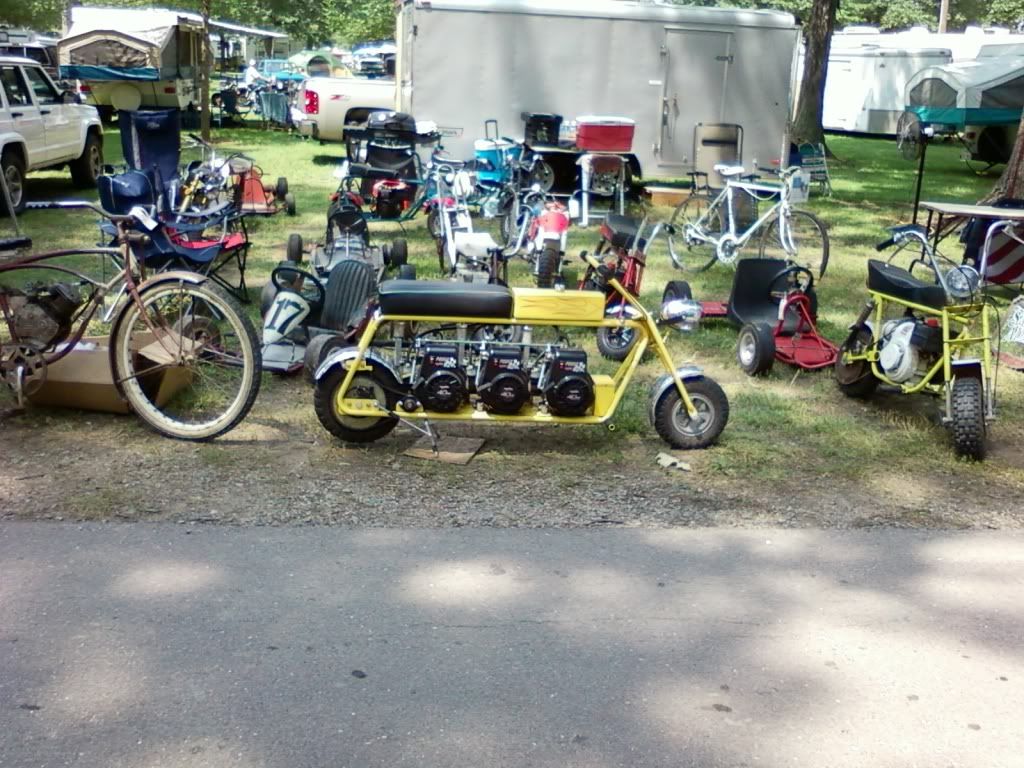I'm looking for pros/cons to hook-up 2 Raptor3's.
My initial idea is to have each Raptor in-line front-to-back, and each have a centrifugal clutch. A single #40 chain gets wrapped around each clutch gear then down to the first jackshaft gear. It would look like a triangle. A second jackshaft gear then goes to the rear sprocket. Several properly placed tensioners to limit chain travel and slap would be installed also. Question is, after each motor is up to speed and both clutch's engaged, will a faster motor clutch pull the slower motor clutch along, or will the slower motor clutch drag the faster motor clutch? It goes without saying that there will be added wear on the clutch's from the opposing forces. Also, if one motor quits, then its clutch would go into free spin imparting minimal parasitic drag to the running engine. And, an excellent chain guard will be mandatory. My concern is the safety of the clutch's and/or chain coming apart. Anyone with some experience with this?
All viewpoints welcome. Let's here it.
My initial idea is to have each Raptor in-line front-to-back, and each have a centrifugal clutch. A single #40 chain gets wrapped around each clutch gear then down to the first jackshaft gear. It would look like a triangle. A second jackshaft gear then goes to the rear sprocket. Several properly placed tensioners to limit chain travel and slap would be installed also. Question is, after each motor is up to speed and both clutch's engaged, will a faster motor clutch pull the slower motor clutch along, or will the slower motor clutch drag the faster motor clutch? It goes without saying that there will be added wear on the clutch's from the opposing forces. Also, if one motor quits, then its clutch would go into free spin imparting minimal parasitic drag to the running engine. And, an excellent chain guard will be mandatory. My concern is the safety of the clutch's and/or chain coming apart. Anyone with some experience with this?
All viewpoints welcome. Let's here it.



